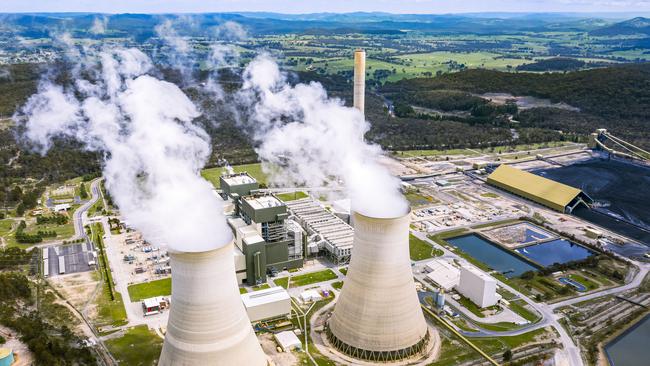Energy price hit forecast by RBA
The Reserve Bank forecasts a 10-15 per cent lift in retail power and gas prices in the September quarter, with more in 2023.

Electricity and gas prices will jump by up to 15 per cent in the second half of 2022 with a similar rise tipped next year, the latest cost hike for households, as retailers pass high energy costs through to consumers.
The Reserve Bank of Australia’s latest economic assessment forecast a 10-15 per cent lift in retail power and gas prices in the September quarter with “further significant increases” of up to 15 per cent expected in 2023.
The cost slug follows the RBA’s forecast for inflation to hit 7.75 per cent this year. With interest rates spiking and house prices falling, the trend is expected to result in consumers’ tightening discretionary spending despite savings buffers being built up through the pandemic.
“Households‘ electricity and gas prices are expected to increase significantly in the September quarter, following the recent increase in wholesale prices,’ the RBA said in its quarterly statement on monetary policy.
An equal sized hit awaits in the 2023 calendar year given many retailers set their current prices before the full weight of high costs hit in the last few months.
Significant increases next year are expected because “the recently announced regulated price increases for 2022 were decided before the latest run-up in wholesale prices and because wholesale prices are expected to remain elevated,” the RBA noted. “Therefore, a further increase may be required to allow retailers to recover their costs.”
Businesses also face a slug from the higher costs with larger operators facing greater increases given wholesale prices make up a larger share of their energy costs due to higher usage. The dynamic will ultimately feed into higher inflation.
“These expected price increases are likely to have a further indirect effect on inflation, to the extent that firms pass increases in energy costs onto their customers via higher prices,” the RBA said.
Wholesale electricity or ‘spot’ prices soared five-fold in June and July from the start of the year, with major coal power plants breaking down and others undergoing seasonal maintenance.
Several generators including the nation’s largest coal station, Origin Energy’s Eraring, faced issues sourcing supplies as the fossil fuel contributed its lowest second quarter for power production on record at about 43 per cent compared to 60 per cent historically.
Gas was not far behind, trading as much as four times normal levels as high demand and restrictions on Russian supplies led to a price crunch.
“The most significant price jump occurred in early May, when the increase in demand for gas-fired electricity generation drove a sharp increase in domestic wholesale gas prices, which reached $40 a gigajoule by the second week of May and have remained around this level since,” the RBA said. “This higher price for wholesale gas inputs has led to even higher gas-fired electricity generation costs, and therefore higher wholesale electricity prices.”
The gas squeeze saw the Australian Energy Market Operator activate its emergency gas supply guarantee mechanism in July for just the second time on record to help arrest shortfalls in Victoria prompting the state’s Energy Minister Lily D’Ambrosio to demand new tools should be made available to the operator to fix a shortage warning in place until the end of September.
Lower than expected output from renewables was also named as a factor contributing to the increase in wholesale electricity prices. While clean energy generation was higher in each month of 2022 than prior years, the power produced per unit of capacity actually fell, partly due to poor weather.
“This may have put further pressure on wholesale electricity prices if market participants had anticipated that renewable generators would supply more electricity into the national electricity market,” the RBA said. “Lower-than-expected output from rooftop solar may have also led households and businesses to demand more electricity from the market in recent months.”
AEMO suspended the entire market in June for a week. Soaring wholesale prices saw caps introduced, ultimately resulting in over 10 per cent of high-cost generation remaining offline over fears of running at a loss at the capped level.
Households already face power bills rising by hundreds of dollars after the national regulator announced increases of up to 18 per cent on standing offers from the start of July.




To join the conversation, please log in. Don't have an account? Register
Join the conversation, you are commenting as Logout